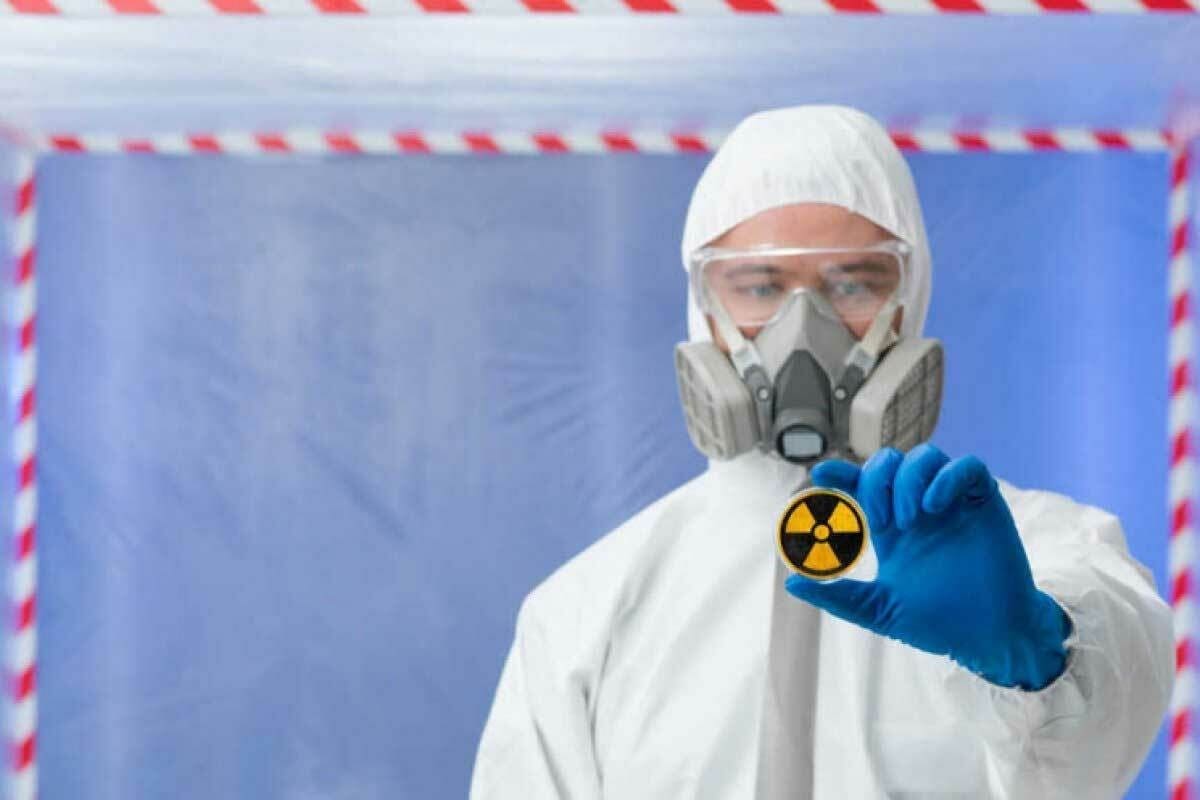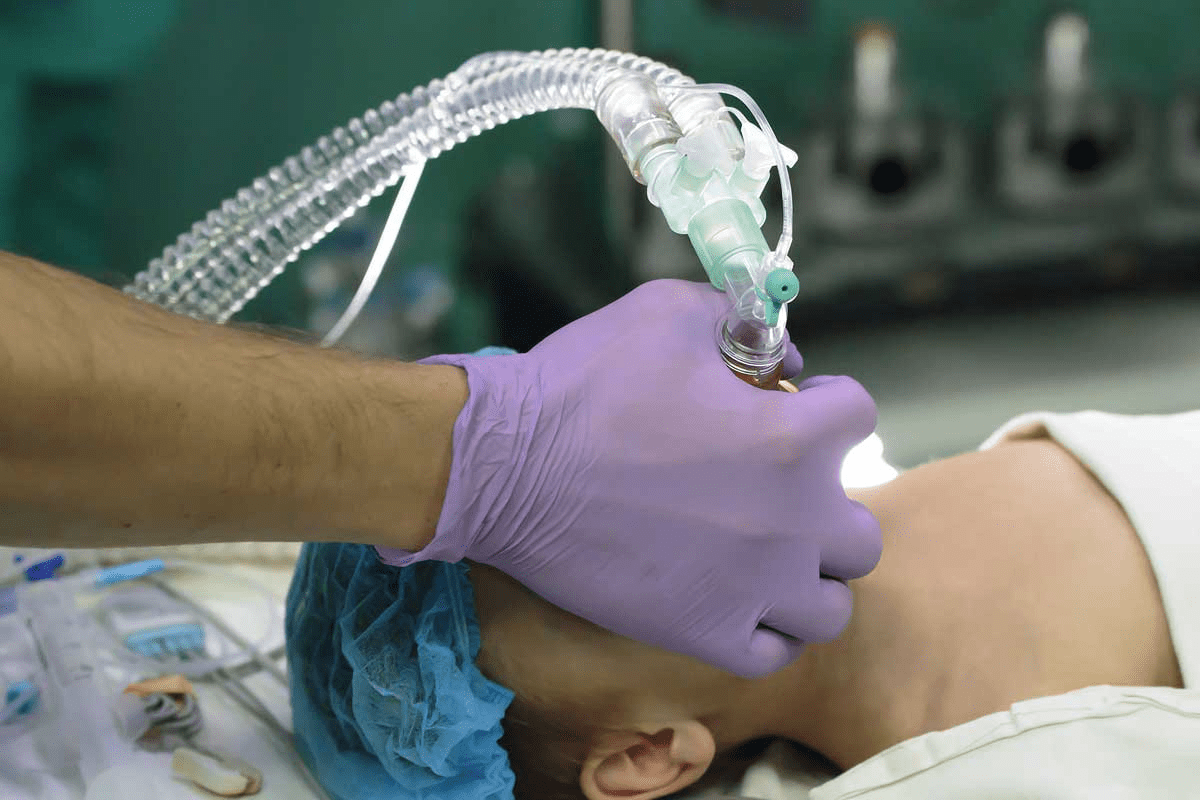Last Updated on November 26, 2025 by Bilal Hasdemir
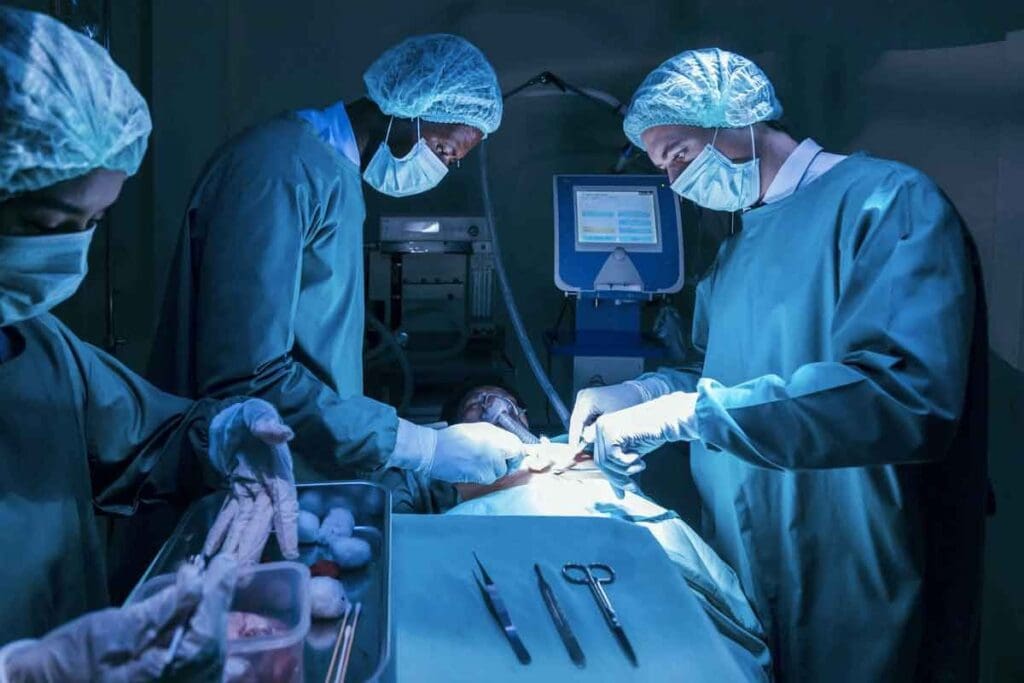
Abdominal aortic aneurysm stent grafts are a big step forward in treating aortic aneurysms. They offer a minimally invasive solution. This solution strengthens weak spots in the aorta, lowering the chance of rupture. Learn what an abdominal aortic aneurysm stent graft is, how it’s placed, and key recovery facts.
The global market for these devices is growing fast. It’s expected to hit over $4.2 billion by 2025. This growth is because more people are getting aortic aneurysms. Also, more doctors are choosing endovascular procedures over open surgery.
Liv Hospital is leading in this medical field. They use the latest technology and international standards. This ensures the best care for patients getting AAA stent placement.
Key Takeaways
- Abdominal aortic aneurysm stent grafts are a minimally invasive treatment option.
- The global market for these devices is expected to reach $4.2 billion by 2025.
- Liv Hospital utilizes advanced technology for aortic treatments.
- Endovascular procedures are preferred over traditional open surgery.
- AAA stent placement is a critical intervention for preventing aortic rupture.
The Growing Threat of Abdominal Aortic Aneurysms
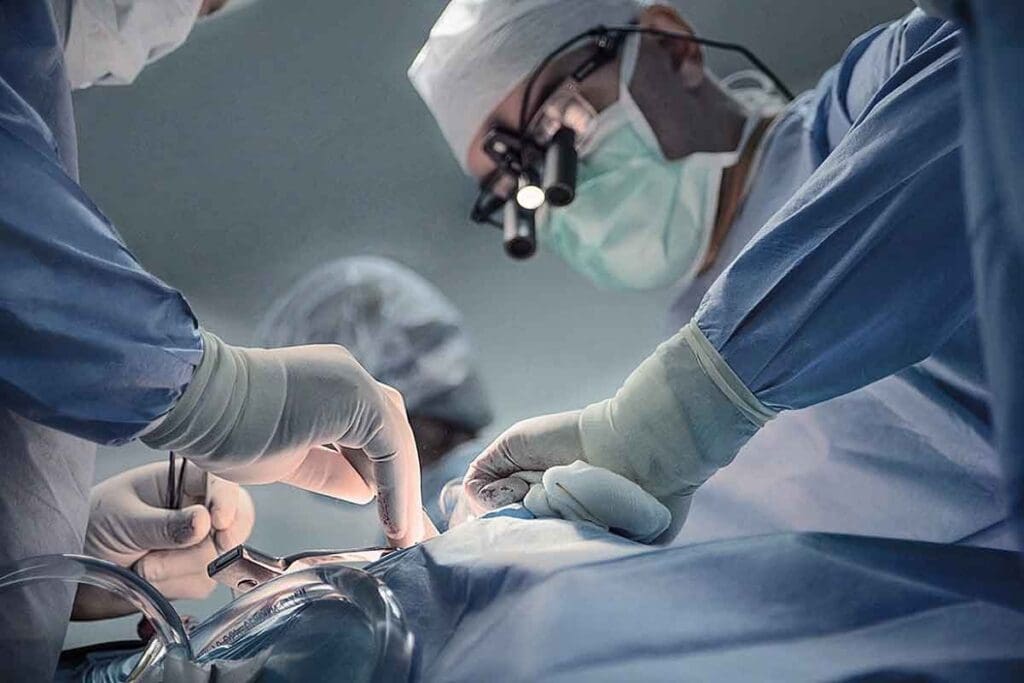
Abdominal aortic aneurysms are growing in number. They are serious health risks if not caught early.
What Defines an Abdominal Aortic Aneurysm
An abdominal aortic aneurysm is when the aorta in the belly gets too big. It’s usually not noticed until it bursts.
StatPearls says these aneurysms are abnormal bulges in the aorta. They might be found by accident or when they burst.
Risk Factors and Prevalence Statistics
Things like smoking, high blood pressure, and family history can lead to AAAs. Men are more likely to get them, and the risk goes up with age.
| Risk Factor | Impact on AAA Development |
| Smoking | Significantly increases risk |
| Hypertension | Contributes to aneurysm growth |
| Family History | Genetic predisposition |
Detection Methods and Screening Recommendations
Finding AAAs early is key to managing them. Men aged 65-75 who have smoked should get ultrasound tests.
“Screening for abdominal aortic aneurysm has been shown to reduce mortality rates among men aged 65-75, who have a smoking history,” a study found.
“The United States Preventive Services Task Force recommends one-time screening for abdominal aortic aneurysm with ultrasonography in men aged 65 to 75 years who have ever smoked.”
The global market for abdominal aortic stent grafts is set to hit over $4.2 billion by 2025. This shows how important managing AAAs is.
Key Fact #1: Abdominal Aortic Aneurysm Stent Grafts Significantly Reduce Rupture Risk
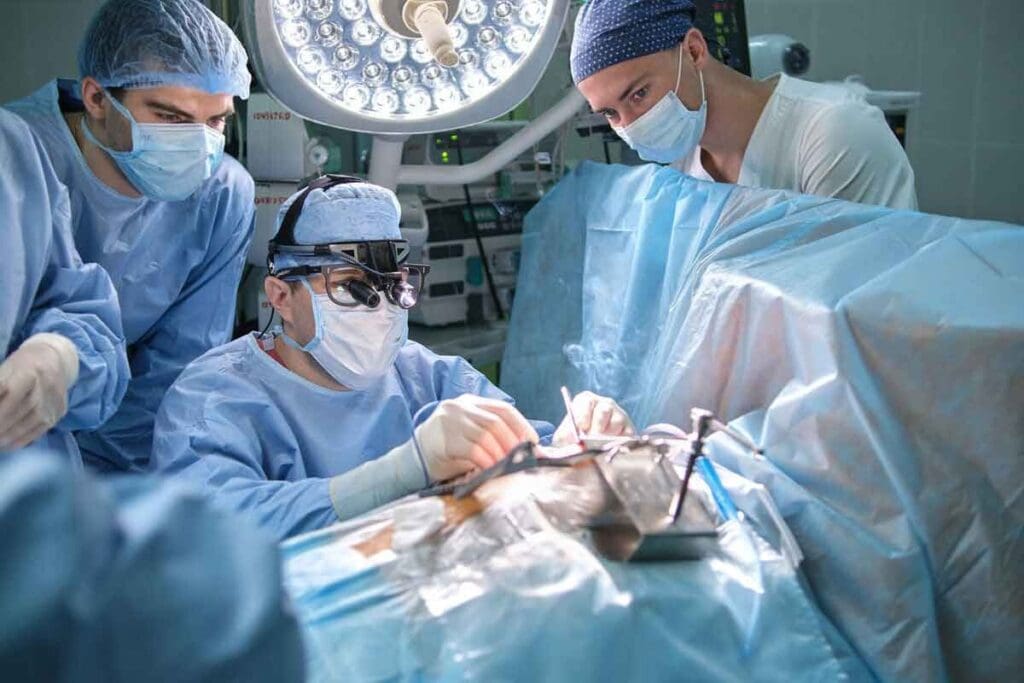
Stent grafts have changed how we treat abdominal aortic aneurysms. They greatly lower the risk of rupture. This new technology offers a better and less invasive option than old surgical methods.
How Stent Grafts Reinforce Weakened Aortic Walls
Stent grafts strengthen the aorta’s weak spots, stopping further growth and rupture. The stent aorta procedure puts a stent graft in the aneurysm. This keeps blood flowing through the graft, not the weak wall. It reduces pressure on the aneurysm and lowers rupture risk.
Mortality Rates Before and After Stent Technology
The aorta stent technology has cut down on deaths from abdominal aortic aneurysms. Before stent grafts, ruptures were very deadly. But, with stent grafts, deaths have dropped, even for older and riskier patients.
| Treatment Method | Mortality Rate Before Stent Technology | Mortality Rate After Stent Technology |
| Open Surgical Repair | 50-60% | 30-40% |
| Endovascular Repair with Stent Graft | N/A | 1-5% |
Preventative Benefits for High-Risk Patients
The stent in aorta procedure is a lifeline for high-risk patients. It prevents aneurysm rupture. These patients, once seen as poor candidates for surgery, now have a safer option.
Endovascular repair with stent grafts is now the top choice for treating abdominal aortic aneurysms. It’s favored for older and riskier patients. The benefits are clear, with a big drop in rupture risk and death rates.
Key Fact #2: The Global Market for AAA Stent Grafts Exceeds $4.2 Billion
The market for Abdominal Aortic Aneurysm (AAA) stent grafts has grown a lot. It now exceeds $4.2 billion by 2025. This growth is due to more people getting AAA and better stent graft technology.
Market Growth Trends and Projections
The AAA stent graft market is growing fast. This is because more people, mainly the elderly, are getting abdominal aortic aneurysms. Studies show the market will keep growing. This is thanks to new technology and better healthcare.
Key growth drivers include:
- Increasing prevalence of AAA among the elderly
- Advancements in stent graft technology
- Growing adoption of minimally invasive procedures
- Rising healthcare expenditure and insurance coverage
Leading Manufacturers and Technologies
Several top companies lead the AAA stent graft market. They offer new and innovative products. Some of these companies are:
- Medtronic
- Endologix
- Cook Medical
- Terumo
These companies keep investing in research. They aim to make their stent grafts better. This helps patients and grows their market share.
Factors Driving Market Expansion
The AAA stent graft market is expanding for several reasons. These include:
- Technological advancements: New stent graft designs and materials make them more durable and effective.
- Increasing awareness: More people know about AAA and its treatments, leading to more seeking medical help.
- Favorable reimbursement policies: Policies that help pay for stent graft procedures make them more accessible.
As the world’s population ages and AAA cases increase, the need for stent grafts will also grow. This will drive the market even further.
Key Fact #3: EVAR Now Represents Over 73% of All AAA Repairs
The way we treat abdominal aortic aneurysms (AAAs) has changed a lot. Now, over 73% of AAA repairs use endovascular aneurysm repair (EVAR). This is because EVAR is less invasive than traditional surgery.
The Shift from Open Surgery to Minimally Invasive Techniques
Before, doctors used open surgery to fix AAAs. This method was very invasive, needing a big cut in the belly. But now, EVAR is the go-to choice.
EVAR uses small cuts in the groin to put in a stent graft. It’s guided by imaging to block the aneurysm from blood flow.
Studies show EVAR is better than open surgery for many patients. It causes less harm and leads to faster recovery and fewer problems.
Comparing Traditional Surgery vs. Stent in Aorta Artery Placement
| Aspect | Traditional Open Surgery | EVAR/Stent Graft Placement |
| Incision Size | Large abdominal incision | Small incisions in the groin |
| Recovery Time | Several weeks to months | A few days to a week |
| Mortality Rate | Higher | Lower |
| Complications | More frequent | Less frequent |
Why Physicians Increasingly Prefer EVAR
Doctors like EVAR more because it’s less invasive. It also has fewer risks and quicker recovery times. Some EVARs can even be done under local anesthesia, which is safer.
Advances in stent graft technology also play a big role. New stent grafts are stronger and fit more patients, making EVAR a better option for many.
Key Fact #4: Modern Aortic Stent Grafts Use Advanced Materials
Material science has greatly helped in making stent grafts better for fixing aortic aneurysms. New, stronger, and more flexible materials have made Endovascular Aneurysm Repair (EVAR) more effective.
Evolution of Stent Graft Materials
Stent graft materials have changed a lot over time. Early versions were not as good, leading to more problems. Now, modern stent grafts use advanced polymers and metals. These are better at working with the body and lasting longer.
The need for better stent grafts has driven these changes. New materials are designed to be more flexible, strong, and resistant to corrosion.
Polymer and Metal Components in Current Designs
Today’s stent grafts mix polymers and metals. Polyester and polytetrafluoroethylene (PTFE) are used for their good qualities. Metals like nitinol are used for their ability to bend and fit the aorta well.
| Material | Properties | Benefits |
| Polyester | Biocompatible, durable | Reduces risk of graft failure |
| PTFE | Non-thrombogenic, resistant to degradation | Improves long-term graft patency |
| Nitinol | Superelastic, shape memory | Enhances graft flexibility and conformability |
How Material Innovations Improve Outcomes
New materials in stent grafts have made treatments better. They make the grafts last longer and work better. This means fewer problems and better survival rates for patients.
Also, these materials help the graft fit better in the aorta. This means fewer extra surgeries are needed. As research keeps going, we’ll see even better treatments for aortic aneurysms.
Key Fact #5: The Procedure for Aortic Stent Placement Is Minimally Invasive
The EVAR procedure has changed how we treat abdominal aortic aneurysms. It’s a less invasive option compared to traditional surgery. This method has greatly improved patient outcomes by cutting down recovery times and reducing risks of complications.
Step-by-Step Explanation of the EVAR Procedure
The EVAR procedure involves several key steps:
- Accessing the femoral arteries in the groin through small incisions.
- Guiding a catheter through the artery to the site of the aneurysm.
- Deploying the stent graft, which is a fabric tube supported by a metal mesh, to reinforce the weakened area of the aorta.
- Ensuring the stent graft is correctly positioned using imaging technology.
- Securing the stent graft in place to prevent movement.
This process is carefully monitored using advanced imaging techniques to ensure precise placement and deployment of the stent graft.
Imaging Technologies Used During Placement
Advanced imaging technologies are key to the EVAR procedure’s success. Techniques like fluoroscopy and angiography guide the stent graft into position. These technologies provide real-time images, allowing surgeons to accurately place the stent graft and ensure it is securely fixed.
“The use of imaging technologies during EVAR has significantly improved the accuracy and safety of the procedure.”
Typical Hospital Stay and Recovery Timeline
The EVAR procedure’s minimally invasive nature leads to shorter hospital stays and recovery times. Patients usually stay in the hospital for 1-3 days after the procedure. Full recovery takes a few weeks, but it can vary based on individual factors.
| Recovery Stage | Typical Duration |
| Hospital Stay | 1-3 days |
| Return to Normal Activities | 2-4 weeks |
| Full Recovery | 4-6 weeks |
Key Fact #6: Not All Patients Are Candidates for Stent for Abdominal Aortic Aneurysm
Not every patient with an abdominal aortic aneurysm can get a stent graft. Some health or body shape issues might make it not possible. Whether or not a patient can get an Endovascular Aneurysm Repair (EVAR) depends on their aorta’s shape and their health.
Anatomical Requirements for Successful Placement
To place a stent graft, the aneurysm must meet certain body criteria. These include:
- Aneurysm size and shape
- Length and angulation of the aortic neck
- Presence of suitable access vessels
The shape of the aorta is key in deciding if EVAR is right for a patient. For example, a short or bent aortic neck can make the procedure harder.
Health Factors That May Contraindicate EVAR
Some health issues can make EVAR not an option. These include:
| Health Factor | Reason for Contraindication |
| Severe kidney disease | Contrast dye used in EVAR can further impair kidney function |
| Significant heart disease | Increased risk of complications during the procedure |
| Allergy to contrast dye | Risk of allergic reaction during EVAR |
Alternative Treatment Options
For those not suited for EVAR, other treatments exist. These include:
- Open surgical repair
- Conservative management with monitoring and medication
Open surgical repair is a bigger operation with a longer recovery. It’s an option for those not good for EVAR. Conservative management watches the aneurysm and manages risks.
Key Fact #7: Long-Term Monitoring Is Essential After Stent Graft Placement
After getting a stent graft for abdominal aortic aneurysms, patients need ongoing checks. These checks help spot any issues early and keep the stent working right.
Follow-Up Imaging Schedule and Protocols
It’s important to get regular scans to check the stent for AAA. Doctors usually do CT scans or ultrasounds at 1, 6, and 12 months after the surgery. Then, they do them every year after that.
The type of scan and how often it’s done can change based on the stent and the patient’s health. Doctors must follow set rules to keep track of things well and act fast if needed.
Potential Complications to Monitor
After stent graft placement, some problems can happen. These include endoleaks, stent graft migration, and bigger aneurysm sacs. Catching these early helps manage them better.
- Endoleaks: Persistent blood flow into the aneurysm sac.
- Stent graft migration: Movement of the stent graft from its original position.
- Aneurysm sac enlargement: Increase in the size of the aneurysm sac.
Endoleak Detection and Management
Endoleaks are a big worry that needs close watching. They’re divided into types based on where the leak is. Doctors usually use CT angiography to find them.
How to handle endoleaks depends on the type and how bad it is. Doctors might just watch it, or they might do more like putting in another stent or using embolization.
Keeping an eye on things long-term after stent for abdominal aortic aneurysm is key. It helps avoid rupture and makes sure the surgery works for a long time.
Comparing Outcomes: Stomach Aneurysm Stent vs. Traditional Repair Methods
It’s important to know how stent graft placement compares to traditional surgery for stomach aneurysms. The new method of endovascular aneurysm repair (EVAR) has changed how we treat these conditions. It’s a less invasive option compared to open surgery.
Recovery Time Differences
EVAR and traditional open repair have big differences in recovery time. EVAR usually means shorter hospital stays and faster recovery. Patients often get back to normal in a few weeks, while open repair can take months.
Complication Rate Comparisons
Complication rates differ between EVAR and open surgery. EVAR often has fewer complications than open surgery, which is good for older patients or those with health issues. But, EVAR can have problems like endoleaks and stent graft migration.
Quality of Life Assessments
Studies show that patients after EVAR tend to do better than those after open repair. This is because EVAR is less invasive, causing less damage and pain.
In summary, both EVAR and traditional surgery have their roles in treating stomach aneurysms. The right choice depends on the patient’s health, the aneurysm’s size, and personal wishes.
Conclusion: The Future of Abdominal Aortic Aneurysm Management
The future of managing abdominal aortic aneurysms is bright. New stent graft technologies are on the horizon. These advancements will likely improve care for those with this condition.
Recent studies show that better stent graft designs and materials are making EVAR safer and more effective. As the demand for AAA stent grafts grows, companies are working on new solutions. This will help meet the complex needs of patients.
Thanks to EVAR, recovery times are getting shorter and complications are fewer. As stent graft tech improves, more people will have access to this life-saving treatment.
With ongoing research and development, managing AAA will become even more effective. This brings new hope to patients around the world.
FAQ
What is an abdominal aortic aneurysm (AAA) stent graft?
An abdominal aortic aneurysm stent graft is a device used to treat a weakened aortic wall. It helps prevent the aorta from rupturing.
How does a stent graft placement procedure work?
The procedure, called endovascular aneurysm repair (EVAR), uses small incisions in the groin. It guides a stent graft to the aorta’s aneurysm site. The stent graft then fits snugly against the aortic walls.
What are the benefits of using a stent graft for AAA repair?
Stent grafts offer a minimally invasive procedure. They have a shorter recovery time and lower complication risks. They’re also good for patients who can’t have open surgery.
What materials are used in modern aortic stent grafts?
Modern stent grafts use durable polymers and metals like nitinol. These materials provide strength, flexibility, and corrosion resistance. This improves the stent graft’s longevity and effectiveness.
Are there any risks or complications associated with stent graft placement?
Stent graft placement is generally safe but carries risks. These include endoleaks, stent migration, and the need for more procedures. Regular imaging is key to monitor for these issues.
How long does it take to recover from an EVAR procedure?
EVAR recovery is quicker than open surgery. Most patients can resume normal activities in a few weeks. Recovery time varies based on individual health.
Can everyone with an abdominal aortic aneurysm be treated with a stent graft?
Not all patients with an abdominal aortic aneurysm can have a stent graft. Suitability for EVAR depends on the aneurysm’s anatomy, other health conditions, and the patient’s overall health.
What follow-up care is required after stent graft placement?
Patients need long-term monitoring after stent graft placement. Regular imaging tests, like CT scans, are necessary. They check for complications and ensure the stent graft is working correctly.
How does the outcome of stent graft placement compare to traditional AAA repair methods?
Studies show stent graft placement can offer better outcomes than traditional surgery. Benefits include shorter recovery times, lower complication rates, and improved quality of life for many patients.
Reference
- National Heart, Lung, and Blood Institute. (2024). What is an aortic aneurysm?. National Institutes of Health. https://www.nhlbi.nih.gov/health/aortic-aneurysm



